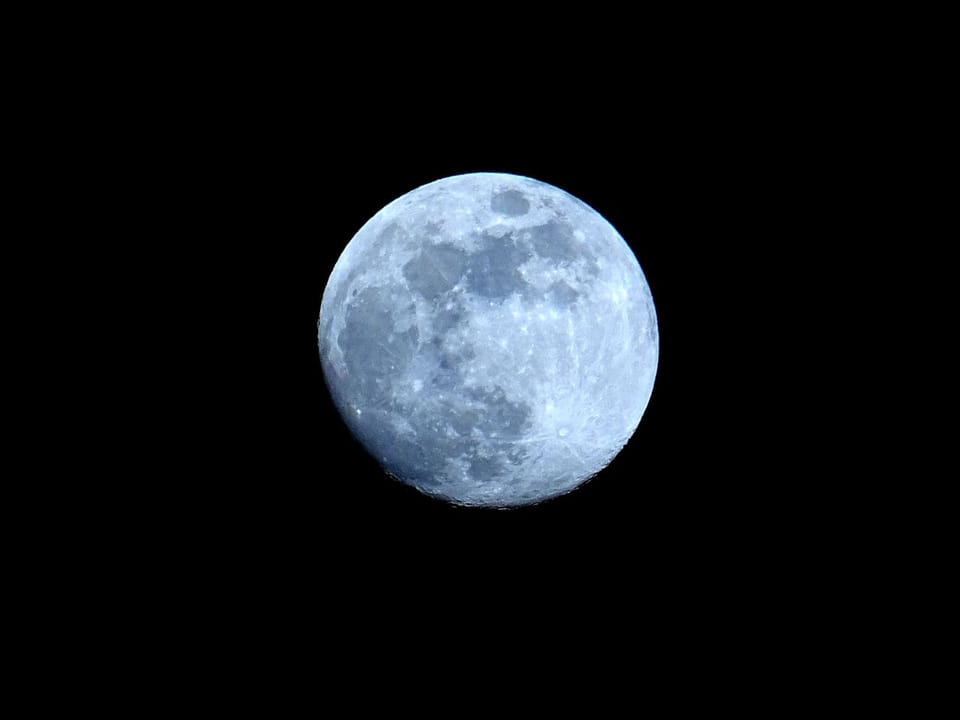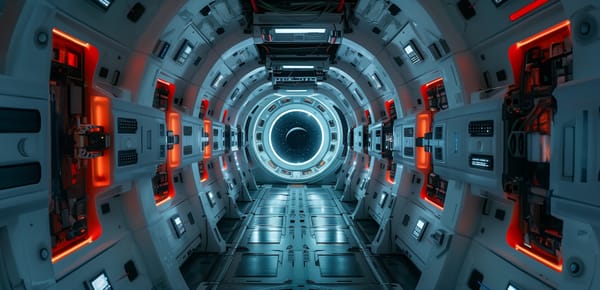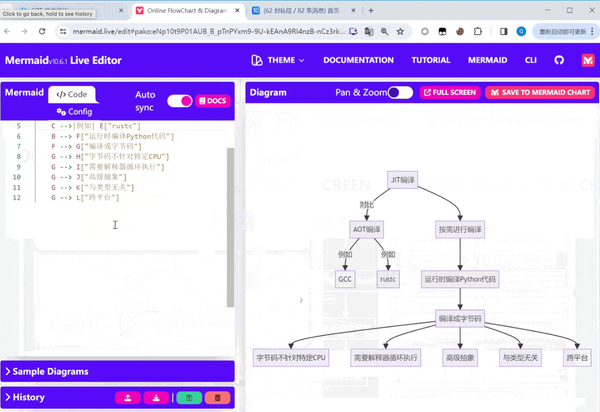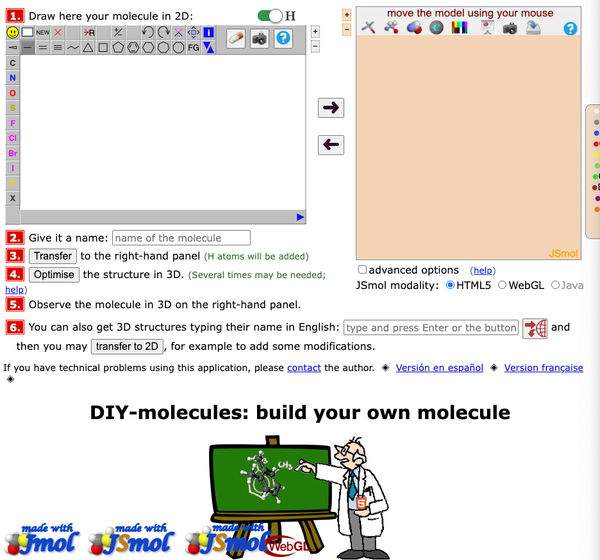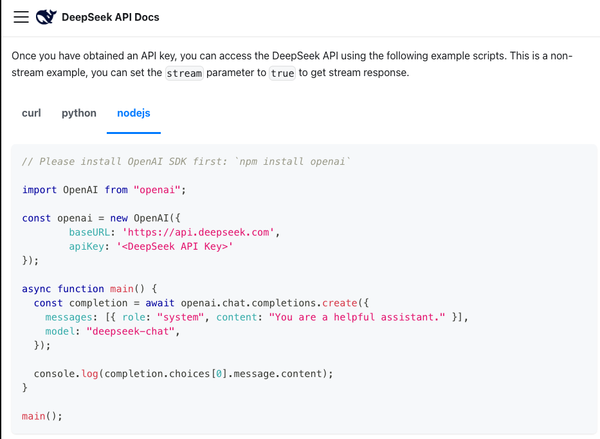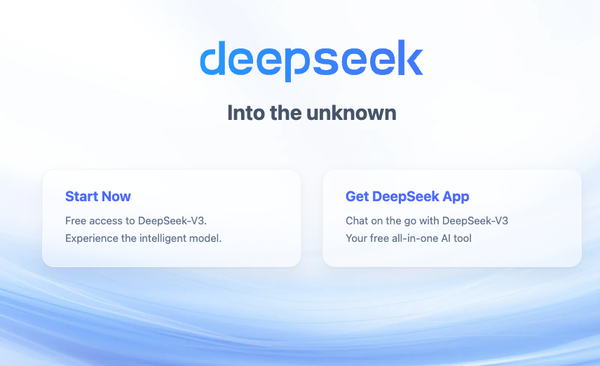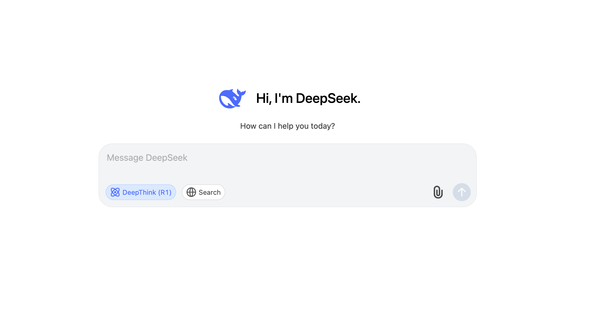19 Free Open-Source Tools for Astronomy Enthusiasts (Windows, Linux and macOS)
Table of Content
Astronomers and hobbyists alike can benefit from a wide array of open-source software for stargazing and research. These free tools cover everything from sky mapping to image processing, offering alternatives to expensive commercial options.
Why Choose Open-Source?
- Free to use
- Community-driven improvements
- Transparent and trustworthy
- Customizable to your needs
- Works on multiple operating systems
Popular Features:
- Sky charting
- Astrophotography processing
- Telescope control
- Data analysis
Alternative Commercial Solutions
- TheSkyX Professional – Advanced sky mapping and telescope control software.
- MaxIm DL – Professional astrophotography tool for image processing and equipment management.
- PixInsight – A powerful image processing platform for deep-sky images.
- ACP Observatory Control Software – Automation tool for remote observatories.
- Starry Night Pro – Planetarium software with rich sky visualization.
- Sequence Generator Pro – Software for planning and automating astrophotography sessions.
- SkyTools – Observational planning software for amateur astronomers and observatories.
Whether you're planning observation sessions, processing deep-sky images, or controlling your telescope, there's likely an open-source tool to help. These solutions empower the astronomy community by making powerful software accessible to all.
However, before we start let's talk about, OpenAstronomy!
OpenAstronomy is a collaborative organization that brings together open-source projects related to astronomy. Its goal is to promote the development, use, and education of open-source tools in the field of astronomy and astrophysics. OpenAstronomy supports and connects various projects, providing infrastructure, outreach, and collaboration opportunities.
It encourages community-driven development to make astronomical research tools accessible to everyone, fostering innovation and inclusiveness within the scientific community
In the following list, we collected the best open-source astronomy projects for professionals and hobby astronomers.
1- AstroCTC
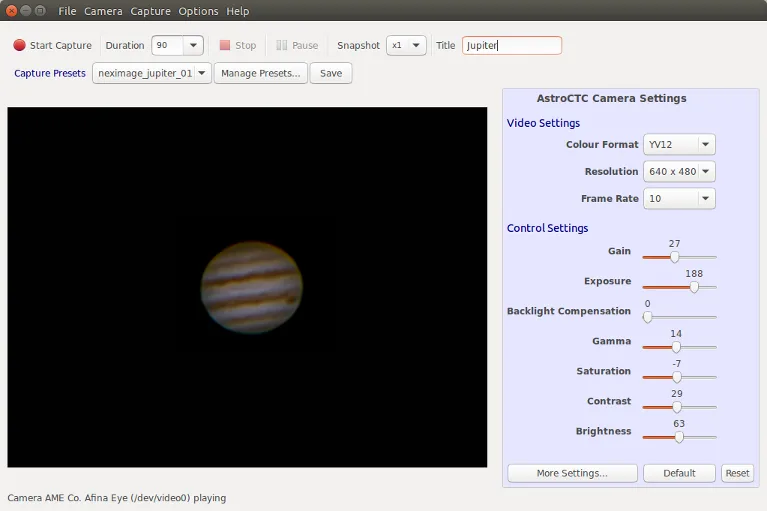
AstroCTC (Astronomy CCD in Telescope Capture) is an open-source Linux-based application designed for capturing videos and images of celestial objects, specifically the Moon and planets. It works best with astronomy-specific or modified webcams, though it supports most V4L2-compliant webcams.
Users can capture in various video and image formats, with basic support for FITS images for advanced users.
While tailored for astronomical use, AstroCTC can also function as a general-purpose webcam tool. Sample captures include images taken with a Meade LX90 8" telescope and a Celestron NexImage camera.
It is released under the GNU General Public License version 3.0 (GPLv3).
Feature
- Video Capture
- Snapshot with delay and group options
- Full Camera and video control settings
- Night Vision
- Reticule
- Session / Camera profiling
- Many Video and Image formats provided
- Video and Image format property setting
- Flexible file naming
- User preferences
2- Stellarium
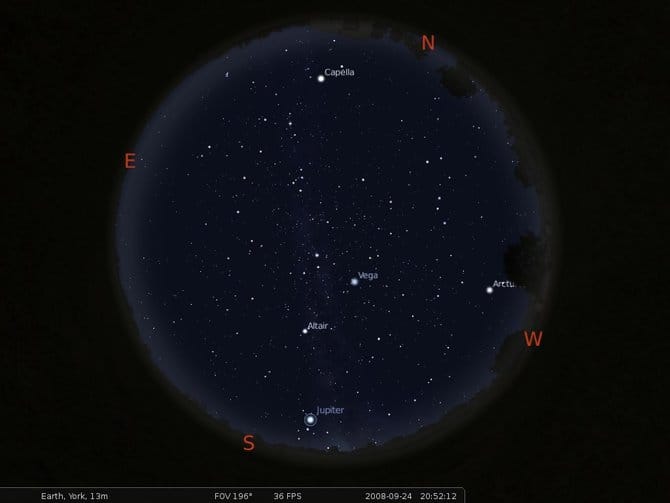
Stellarium is a free, open-source planetarium software that provides a realistic, real-time simulation of the night sky. It allows users to explore stars, planets, constellations, and other celestial objects from any location on Earth.
Stellarium is built for astronomers, educators, and stargazing enthusiasts, it features customizable star catalogs, telescope control, and time travel to observe past or future skies. Available on multiple platforms, Stellarium offers a stunning, immersive experience for both desktop and mobile users.
It works for Linux, Windows, macOS and offers also a web version.
Stellarium Features List
- Over 600,000 stars in the default catalogue
- 177+ million stars available through extra catalogues
- 80,000+ deep-sky objects in the default catalogue
- 1 million+ deep-sky objects with extra catalogues
- Asterisms and illustrations of constellations (Constellations and Cultures)
- Constellations for 40+ cultures (Constellations and Cultures)
- Calendars for 35+ cultures (Constellations and Cultures)
- Realistic Milky Way rendering (Sky and Space Visualization)
- Full Messier catalogue with nebulae images (Sky and Space Visualization)
- Realistic atmosphere, sunrise, and sunset (Sky and Space Visualization)
- Visualization of planets and their satellites
- All-sky surveys (DSS, HiPS)
- Star twinkling and shooting stars effects
- Comet tails visualization
- Eclipse simulation
- Supernovae and novae simulation
- Exoplanet locations tracking
- Powerful zoom capabilities
- Time control for observing past or future skies
- Multilingual interface
- Scripting interface for automation
- Fisheye projection for planetarium domes
- Spheric mirror projection for low-cost dome setups
- Graphical interface with extensive keyboard control
- HTTP interface for web-based remote control
- Telescope control integration
- Coordinate grids and precession circles
- Ocular view simulation
- 3D sceneries for immersive viewing
- Skinnable landscapes with spherical panorama projection
- Plugin system for adding:
- Artificial satellites
- Ocular simulation
- Telescope control
- Ability to add new solar system objects from online resources
- Support for custom deep-sky objects, landscapes, constellation images, and scripts
3- Celestia

Celestia is a free and open-source space simulation project for scientists and hobbyists that enables users to explore the universe in three dimensions. It works on Windows, macOS, Linux, iOS, and Android.
Celestia supports Virtual Textures, allowing it to display extremely high-resolution textures or close-up planetary surface features efficiently by loading only the necessary tiles.
The app also includes audio playback capabilities, enabling background music in CEL/CELX scripts for enhanced experiences (available from version 1.7.0).
Additionally, trajectory support is provided, allowing for accurate modeling of spacecraft paths using sampled orbits or NASA's SPICE kernels for various solar system objects.
4- OpenSpace

OpenSpace is open-source software for visualizing the universe, supporting dynamic data, simulations, and space mission planning. It works on various platforms, offers global collaboration, and is funded by NASA and Swedish institutions.
5- C-Munipack
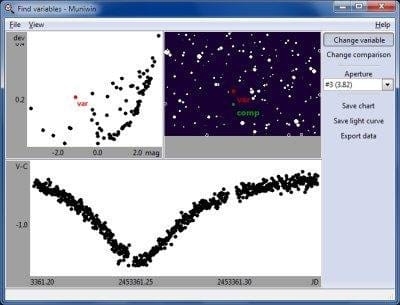
C-Munipack is astrophotometry program designed to process images from CCD or DSLR cameras. It helps observe variable stars, exoplanets, and minor solar system bodies, offering an easy-to-use graphical interface.
Features
- Simple and intuitive graphical user interface
- Reduction of CCD frames by means of the aperture photometry
- Reduction of RAW format produced by selected models of DSLR cameras
- Semiautomatic detection of new and unknown variable stars on a set of frames
- Combining a set of bias, dark and flat frames into high quality master-bias, master-dark and master-flat correction frames
- Ensemble photometry
- Static or shared library with an extensive set of functions, that can be called using simple application programming interface
- A complete set of commands that can be used for automatic surveys
- Exports light curve in the AAVSO extended format
- Photometry of minor Solar System bodies
6- Astrolog
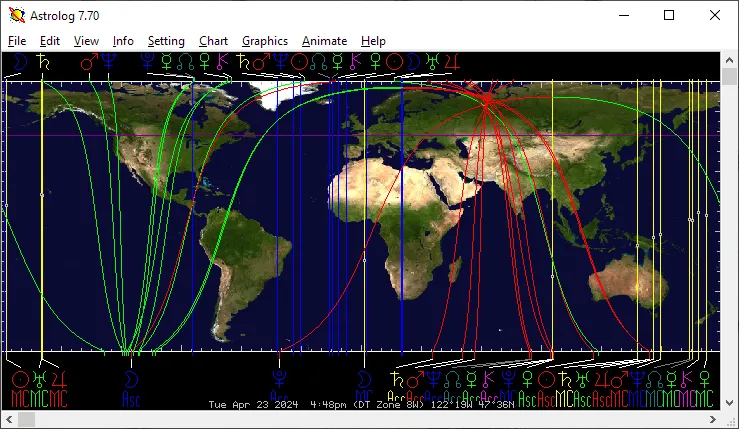
Astrolog is free astrology software for calculating, charting, and analyzing astrological data. It offers various computational and graphic features, supporting both Windows and Unix environments. The software includes full C++ source code, making it customizable for developers and astrology enthusiasts.
Features
- Show planets, asteroids, Uranians, planetary moons, and fixed stars, with 10800 year ephemeris.
- Compute 23 house systems, geo/heliocentric, ayanamsas, harmonics, decans.
- Display wheels, aspect/midpoint, local horizon, rising/setting, astrocartography, etc.
- Search transits, progressions, aspects over time, sign/direction changes, eclipses.
- Compare synastry, composite, time/space midpoint, and weighted influences.
- 195K city atlas to provide coordinates, time zone, and Daylight Saving Time detection.
7- Lynkeos
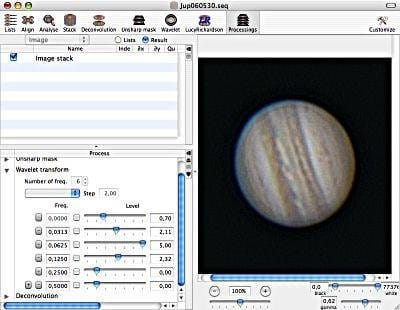
Lynkeos is free app that is optimized for SSE vectorized instruction sets and multi-core processors, ensuring high performance.
It supports native macOS, handles planetary and deep-sky images efficiently, and can be expanded with plugins, making it versatile for advanced astrology and astronomical tasks.
8- Open Astro
OpenAstro is an open-source initiative aimed at simplifying astrophotography by supporting various astronomy equipment and control systems. It works with technologies such as ALPACA, ASCOM, INDI, and INDIGO to ensure compatibility across multiple devices and platforms, including Raspberry Pi setups.
OpenAstro offers lightweight installations, leveraging Raspbian for seamless control over tools like ZWO ASIAIR Pro and Plus.
The project emphasizes flexibility and collaboration by providing the full source code on GitHub, making it an accessible solution for both amateur and professional astronomers.
9- Sky Chart / Cartes du Ciel
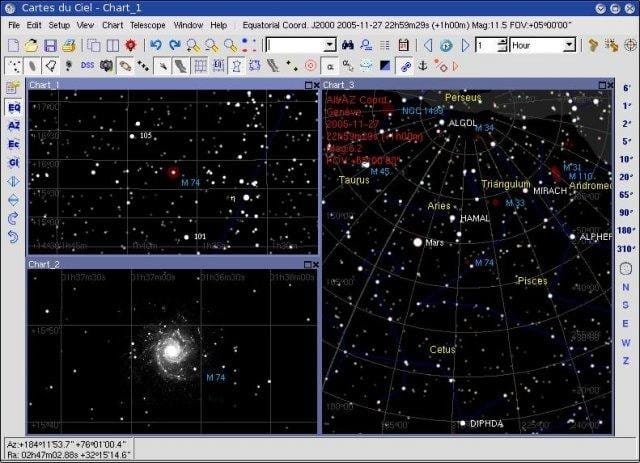
SkyChart is a free and open-source (GPL-2.0) program designed to generate detailed charts of the night sky, primarily for amateur astronomers. It compiles data from various star and nebula catalogs to create accurate sky maps.
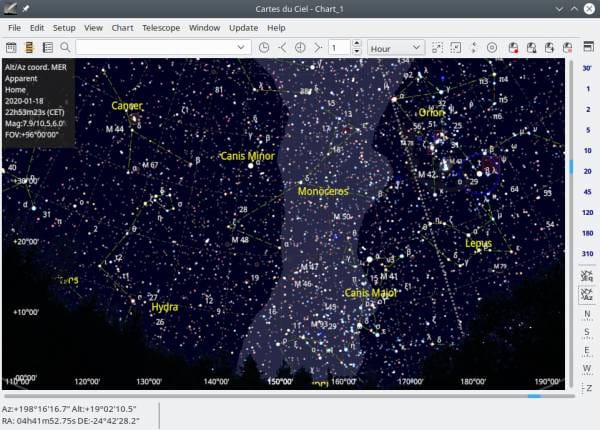
It works on Windows, Linux (Debian, Ubuntu, Arch Linux, Linux Mint), and macOS.
10- Astap program
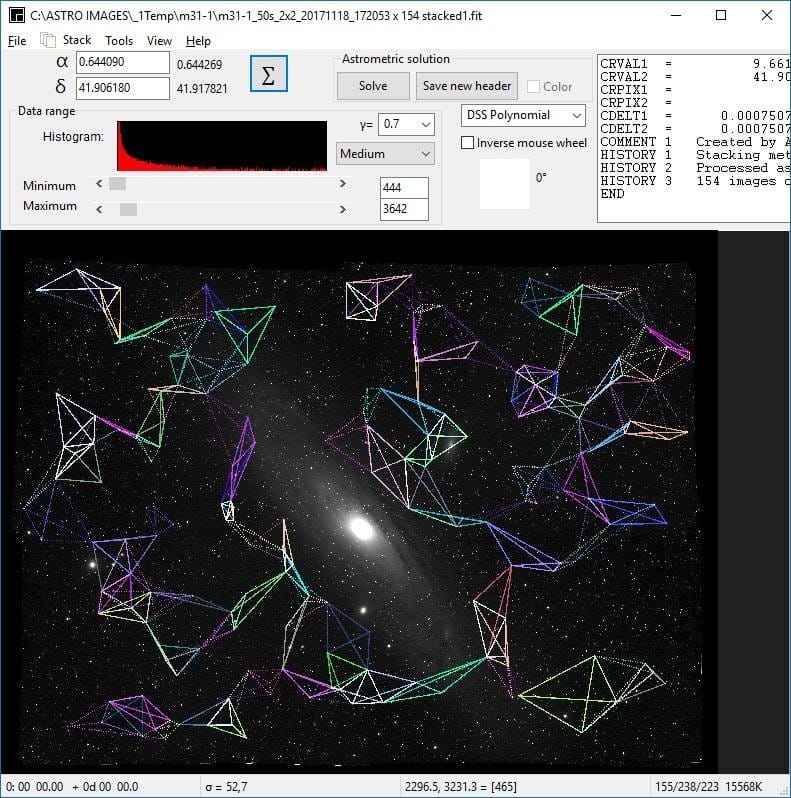
ASTAP (Astrometric STAcking Program) is a free software tool designed for astrophotography enthusiasts, providing powerful capabilities for image stacking, astrometric solving, and FITS image analysis. It supports alignment and correction of deep-sky images using dark frames and flat field calibration.
The app features a native astrometric solver, internal star matching routines, and ephemeris-based alignment. It also offers a FITS viewer with advanced annotation, photometry tools for variable stars, and a blink routine for comparing multiple images.
ASTAP is an ideal option for amateur astronomers seeking to process and analyze celestial images effectively.
Features
- Stacking astro images
- FITS viewer
- Astrometric solving
- Plate solving
- CCD inspector
- Photometry
- Star annotation
- Annotation of solar and deepsky objects
- FITS thumbnail viewer
- Batch conversion astro images.
11- Astronomy Engine
Astronomy Engine is an open-source library suite designed for calculating the positions of celestial bodies such as the Sun, Moon, and planets. It also predicts astronomical events like oppositions, conjunctions, eclipses, lunar phases, and rise/set times. The libraries support multiple programming languages with consistent APIs, ensuring easy integration.
Built to be lightweight and accurate within ±1 arcminute, Astronomy Engine is based on the reliable VSOP87 and NOVAS C 3.1 models. It undergoes rigorous unit testing against trusted data sources like NOVAS and JPL Horizons to maintain accuracy across all supported languages.
It supports several programming language that include C, C#, JavaScript, Python, Kotlin, and more.
Feature List of Astronomy Engine
- Positions & Events: Sun, Moon, planets, conjunctions, eclipses, solstices, apogee/perigee, and Mercury/Venus transits.
- Observer Data: Apparent positions with atmospheric correction, rise/set times, and twilight phases.
- Simulation: Custom small body tracking, Jupiter’s moons, and lunar phases.
- Coordinates: Convert between Equatorial, Ecliptic, Galactic, and Topocentric systems; identify constellations.
- Accuracy: Heliocentric/geocentric vectors, libration of the Moon, and precise axis orientation for celestial bodies.
12- PreviSat
https://previsat.sourceforge.net/
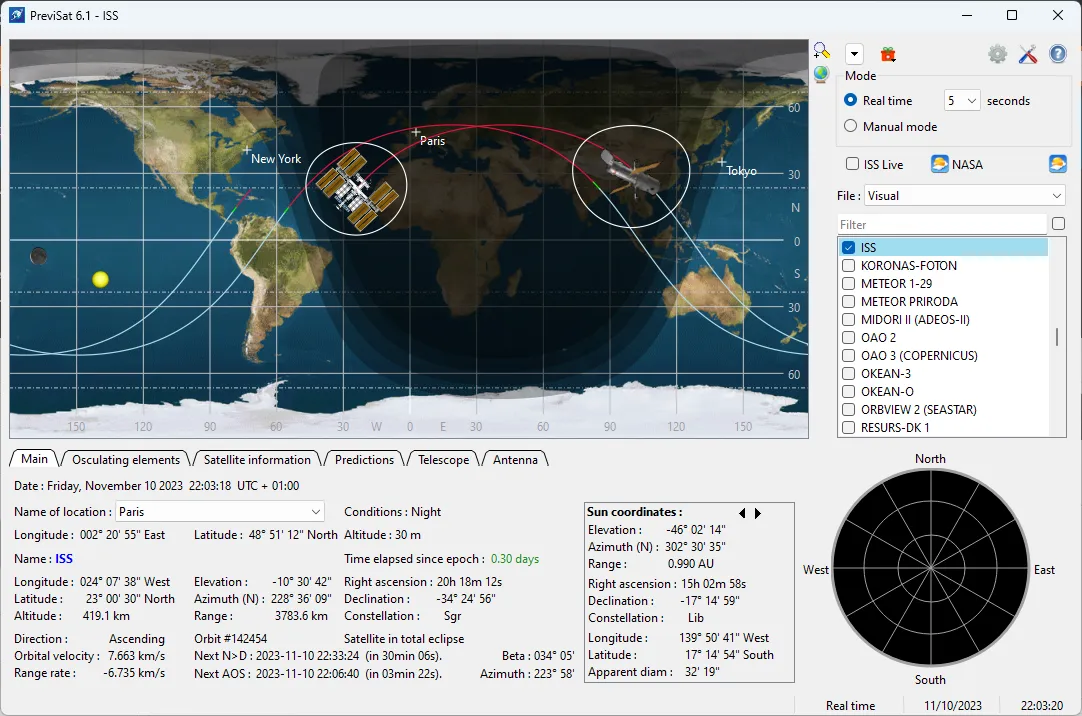
PreviSat is a satellite tracking software for observing purposes. Very easy to use, it shows positions of artificial satellites in real-time or manual mode. PreviSat is able to make predictions of their passes, predictions of MetOp and COSMO-SkyMed flares, transits of all satellites, predictions of Starlink satellites passes and several other calculations.
PreviSat is an open-source project that is released under the GPL-3.0 License.
Features
- NORAD SGP4 model (Hoots, Roehrich, 1980; Vallado, 2006)
- Real time / Manual mode
- World map / Sky map
- ISS Live and Wall Command Center visualization
- Topocentric / Equatorial / Terrestrial coordinates (satellites, Sun, Moon)
- Osculating elements, satellite information, ISS information
- Weather for observer location and NASA bases
- Intuitive interface (handling of orbital elements, selection of location, options for display)
- Prediction of passes, MetOp and SkyMed flares, transits, Starlink passes and orbital events (very fast calculations)
- Tracking with a Sky-Watcher mount
- Antenna tracking for radio satellites
- Satellite data search (all objects referenced by NORAD since 1957)
- Management of the new orbital elements format (GP)
- Dark mode
- Available for Windows/Linux platforms
13- Siril
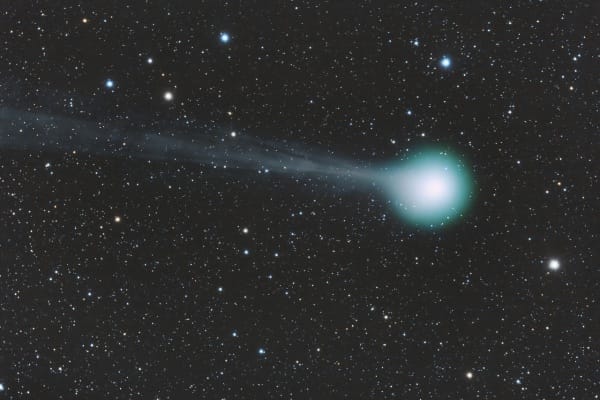
Siril is an open-source image processing software for amateur astronomers, designed to streamline the processing of astronomical images. It offers a user-friendly alternative to Iris, with modern algorithms for tasks like stacking and photometric color correction.
Siril excels in processing deep-sky and lucky imaging sequences but currently lacks multi-point registration for high-resolution planetary imaging.
It supports manual and automatic alignment, making it suitable for low-quality images. Initially for Linux, Siril now also works on macOS and Windows, with both manual and script-based operation. Learn more at Siril's official page.
14- myFocuserPro
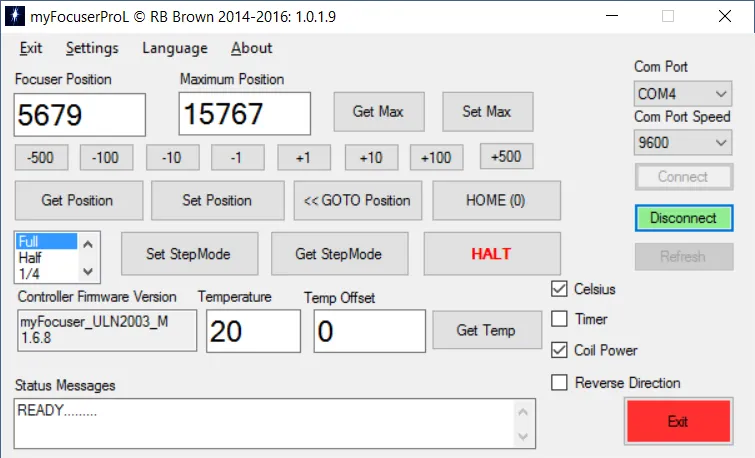
myFocuserPro is an ASCOM and Moonlite compatible stepper motor telescope focus controller (DIY) based on Arduino Nano/Uno. A popular DIY ASCOM focuser with more than 117,000+ downloads.
Features
- ASCOM driver tested with FocusMax, Nebulosity 4.1.1, APT v3.13 and ScopeFocus
- Supported Driver Boards - A4998, ULN2003, L293D, L298N, DRV8825, EasyDriver, ST6128, RAPS128, TMC2225/2209
- Software - Windows Application, ASCOM driver, INDI moonlite driver
- Create using stripboard layout or using PCB design
- Tested with INDI moonlite driver under Ubuntu and Ekos
- Tested on MacBook with TheSky and Moonlite driver
- Manual or full automated remote control (eg focusmax)
- Manual control by Push Buttons, Infra-red controller, rotary encoder
- Manual zero position (hold down both push buttons for 2 seconds) or via application/ASCOM driver
- Arduino code, ASCOM driver and Windows Application support for all build options
- Multiple Language support
- LED indications for IN, OUT (optional) and external PWR
- LCD1602/I2C display (optional) for positional information (Current and Target positions)
- Temperature probe support (optional - DS18B20 accurate to 0.5 degree)
- Reverse voltage protection on 12VDC input
- Option1: 28BYJ-48 Stepper Motor and ULN2003 driver board using Arduino Nano
- Option2: NEMA17HS15-0404S-PG5 Stepper Motor and L293D Motor Shield using Arduino Uno
- Option3: NEMA17 and DRV8825 driver board - up to 6400 steps per revolution!
- Option4: NEMA17 and EASYDRIVER board - up to 1600 steps per revolution
- Specify Reverse Direction, Coil Power, Stepping mode in either ASCOM or Windows application
- Important focuser parameters stored in controller EEPROM and retrieved when driver/application connects
- Full build instructions, diagrams, test scripts, comprehensive manual, bracket design and more
- Detailed instructions on initial setup, operation and selection of stepper motors
- Full parts list with suppliers, costs and build options
- Bluetooth Wireless adapter HC05 option
15- Galpy
Galpy is a Python package designed for galactic dynamics, enabling tasks like orbit integration across various gravitational potentials, sampling from distribution functions, and calculating action-angle coordinates for static potentials.
As an Astropy-affiliated package, Galpy fully integrates with Astropy's Quantity framework, allowing seamless handling of units. This makes it a valuable tool for astronomers and astrophysicists working on simulations and analysis of galactic systems.
16- Astrometrica
Astrometrica is a software tool designed for asteroid detection and analysis, primarily used in astronomical search campaigns, such as those conducted by the International Astronomical Search Collaboration (IASC). It allows users to analyze images, detect moving objects, and submit reports for further review.
Astrometrica supports precise astrometry, helping amateur and professional astronomers alike contribute to tracking asteroids and other near-Earth objects.
17- Astropy
Astropy is an open-source Python library designed for astronomy and astrophysics, providing tools for tasks like data manipulation, coordinate transformations, time conversions, and unit handling. It supports file formats such as FITS and integrates with various astronomical catalogs. As a community-driven project, Astropy aims to facilitate reproducible research by offering a consistent framework.
It is widely used in scientific computing and works seamlessly with other Python packages, enabling astronomers to conduct robust data analysis and simulations.
18- Specutils
Specutils is a free open-source Python package, part of the Astropy ecosystem, designed for the analysis and manipulation of astronomical spectroscopic data. It provides tools for tasks such as spectrum visualization, extraction, smoothing, and fitting.
Specutils supports common file formats and integrates with the Astropy framework, allowing seamless handling of units and coordinates.
19- AstroML
AstroML is a Python library for machine learning and data analysis in astronomy, built on tools like NumPy, SciPy, scikit-learn, Matplotlib, and Astropy. It offers statistical and machine learning routines, loaders for astronomical datasets, and examples for visualizing data. The goal of AstroML is to provide a community resource with fast, accessible tools for analyzing astronomical data.
- OpenAstronomy https://openastronomy.org/

